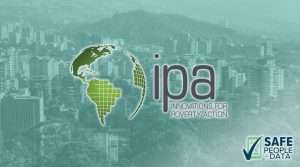 How do you develop a successful financial coaching program? Jonathan Rollins, a Senior Research Associate with Innovations for Poverty Action (IPA), is working with IPA partners to design, build, implement, and test a financial coaching program in Peru that consolidates sector- and context-specific knowledge with academic research and industry best practices. We asked Jonathan to describe his work and how his project is using SurveyCTO as a client management tool.
How do you develop a successful financial coaching program? Jonathan Rollins, a Senior Research Associate with Innovations for Poverty Action (IPA), is working with IPA partners to design, build, implement, and test a financial coaching program in Peru that consolidates sector- and context-specific knowledge with academic research and industry best practices. We asked Jonathan to describe his work and how his project is using SurveyCTO as a client management tool.
Tell us about the financial coaching program in Peru.
IPA is partnering with the Superintendent of Banks, Insurance Companies and Private Pension Administrators (SBS) in Peru to deliver and test a financial coaching program for employees of a shipping company in the port city of Callao.
The financial coaching program is a one-on-one client-driven intervention in which the coach works with a client over 20 weeks to develop financial goal(s) and chart a path towards completion. In the first session, the financial coach captures baseline financial data and then supports the client in developing his/her structured financial goal. Each subsequent session is composed of four sections:
- Reflect upon and re-establish financial goal(s)
- Assess progress towards completing specific goal-focused action items
- Explore barriers to progress and reflect upon opportunities for moving forwards
- Establish a clear action plan to be accomplished before the subsequent session
The financial coaching sessions are initially held in-person in semi-public spaces conveniently located for the client, and then shift to telephone sessions once the coaching relationship has been established.
What are some of the innovative ways you’re using SurveyCTO?
One of the challenges of testing financial coaching is that the service provided by the financial coaches can vary greatly from one client to the next, and from one coach to the next, based on the client-defined goals and coaching tactics. Goals can range from getting out of debt, to better money management, to purchasing a home.
“We used SurveyCTO not only to capture client-level session-specific data, but also to guide the coach on the general process.”
SurveyCTO allowed us to give structure to the process of financial coaching, establishing a more uniform service offered across all clients, while providing space for the flexibility required in a coaching environment.
We used SurveyCTO not only to capture client-level session-specific data, but also to guide the coach on the general process by which to coach the client. In order to do this, we utilized the case administration function in conjunction with cloud datasets to allow coaches to use their SurveyCTO app as a client management tool, data collection tool, and financial coaching guide, all in one simplified form.
Perhaps the best way to explain the functionality is to walk you through an abridged version of the coach experience with the SurveyCTO app:
Prior to sitting down with a client, the coach opens the app and identifies the client in the case management portal. Upon opening the form, the coach sees a snapshot of his/her notes captured in each previous session. When the coach swipes to the next page and begins working with the client, the form displays the client’s financial goal(s) and prompts the coach to facilitate a reflection upon the goal(s) so the client can assess progress and make any necessary adjustments to the goal, all of which is captured in the app. From there, the client’s action plan established in the previous session appears, and the coach captures progress towards those action items and inputs any barriers that the client identified as impediments to action completion. This process continues, page after page, either prompting the coach to update key metrics or providing reminders to utilize tools from our financial coaching toolkit. At the end of the session, the coach and client work to establish a new action plan to be accomplished before the next session, and this is then input into the app. All of the data collected is sent to our project server after the session, and will then prepopulate the subsequent session form.
“Since we have all metrics prepopulated, we are able to create case-specific filters that ask why a debt changed significantly from one week to the next, or why a client was unable to accomplish a specific action item.”
This allows us to keep clients and coaches focused on forward motion, action plan completion, and behavior change in the context of the client’s self-defined goals. Aside from the coach-facing benefits, this structure helps researchers capture higher quality data by personalizing questions to the client’s specific circumstances as established in previous sessions. Since we have all metrics prepopulated, we are able to create case-specific filters that ask why a debt changed significantly from one week to the next, or why a client was unable to accomplish a specific action item. Coaches responded very positively to the tool and appreciated the balance it provided between structure and flexibility.
Is there anything else you’d like to share about the project or survey design in general?
SurveyCTO has made the data cleaning and coding very straightforward and quick. That being said, our SurveyCTO forms required a significant amount of up-front programming and testing – which has absolutely paid off – and it is important to keep this in mind when considering project timeline.
“SurveyCTO is as simple or as complex as you need it to be, and has versatile functionality that can adjust to a large array of project needs.”
On the other hand, we have also used SurveyCTO for simple surveys that required very little programming and testing, so SurveyCTO is as simple or as complex as you need it to be, and has versatile functionality that can adjust to a large array of project needs.
Image courtesy of IPA




